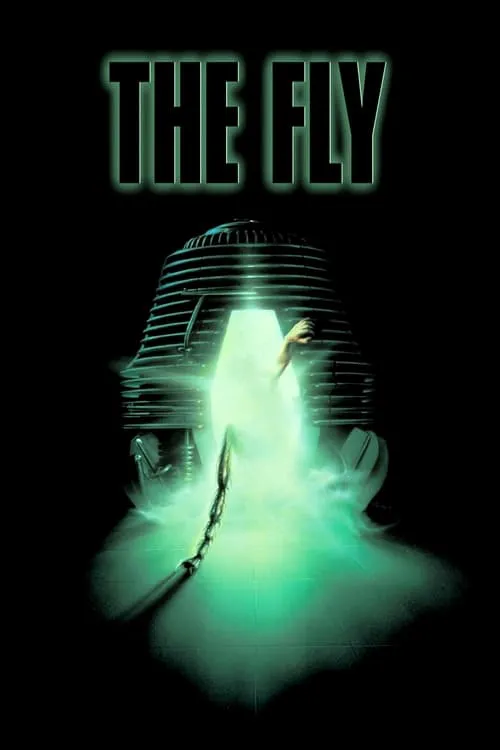The Fly

Plot
The Fly is a 1986 American science fiction body horror film directed by David Cronenberg, based on the 1958 short story of the same name by George Langelaan. The film tells the story of Seth Brundle, a brilliant but eccentric scientist, played by Jeff Goldblum, who has been working on a revolutionary teleportation device. Believing that he has finally cracked the code and made a groundbreaking discovery, Brundle decides to test the device on himself. With his confidence level boosted, Brundle teleports himself to prove the efficacy of the device. He steps into the teleportation pod, closes the doors, and presses the button, initiating the process. However, in his haste, Brundle neglects to sweep the teleportation chamber thoroughly. As a result, a common housefly, attracted by the bright light and warmth emanating from the pod, inadvertently joins Brundle in the teleportation process. The stage is set for a nightmarish fusion of Brundle's human DNA and the genetic makeup of the housefly. At first, the transformation seems imperceptible. Brundle notices an unexplained soreness in his skin and appears to be having trouble sleeping. However, as the days pass, noticeable changes occur in his physical appearance and behavior. Brundle becomes increasingly isolated from society and his loved ones, unaware of the unspeakable horror unfolding within his body. The presence of the fly's DNA triggers a mutation that leads to physical changes, such as severe hair loss, organ replacement, and a disgusting increase in fly-like physical features. Brundle struggles to understand the reason behind his condition, becoming obsessed with isolating the factor causing the transformation. Throughout the film, Cronenberg masterfully illustrates the inner turmoil experienced by Brundle as he grapples with the grotesque consequences of fusing two vastly different biological forms. The once-genial scientist is further isolated, now consumed by the very technology he created. As the story unfolds, Brundle's transformation accelerates, leaving the viewer to confront the dark underbelly of scientific progress. In essence, Brundle undergoes a transformation from a rational, analytical being to a human-fly hybrid, complete with fly wings and other nightmarish body parts. Society's norms and expectations - what makes us 'human' - come under intense scrutiny as Brundle struggles within the confines of his own disintegrating mind and body. Brundle becomes obsessed with finding a cure for his terrifying condition, which ultimately drives him away from his beloved Yvonne, played by Geena Davis. Their complicated relationship comes to an end, creating a chasm between Brundle's isolation and society's fear, where they banish him as 'abomination.' Brundle understands at this point he has irreversibly merged with the genes of the flies. The most unsettling realization for the viewers comes as they witness the sheer speed at which Brundle's identity crumbles, plunging into the form of the housefly. It reeks of a terrible fall into a form that craves freedom of being uninhibited, unchained, and totally separate from societal expectations. The viewers confront the thought that as technology continues to evolve, its unpredictability turns humans into living monsters who undergo grotesque metamorphoses, and this frightening possibility ripples at the back of every aspect of this thrilling and desolate cinematic world. As the story unravels to its haunting climax, the Fly metaphor surfaces - highlighting that when the boundaries between human identity and the external environment dissolve, society's standards of selfhood begin to disintegrate.
Reviews
Recommendations




